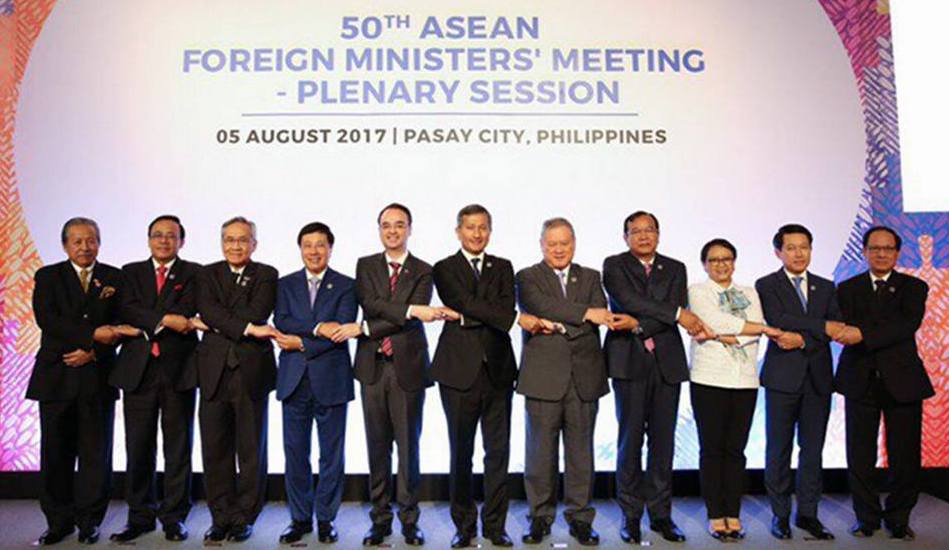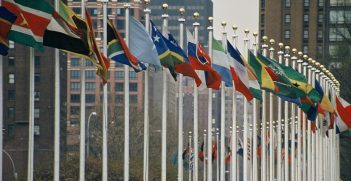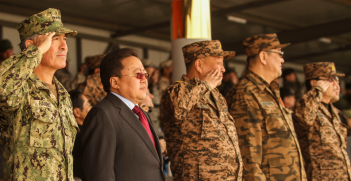ASEAN Turns Fifty: Reflections on the Origins of Southeast Asian Regionalism

On 8 August, the Association of Southeast Asian Nations reaches its half-century. Fifty years ago, the inauguration of ASEAN ushered in the beginning of regionalism in Southeast Asia.
The 1967 ASEAN declaration was just one initiative on a long list of attempts to achieve regional cooperation and it called for a collaborative approach to economic growth, social progress and cultural development. What was missing in this declaration was a call for security and stability. Nevertheless, it was an unwritten assumption that peace and security was the ultimate aim for a region that had witnessed bloody revolution and rapid decolonisation over a period of just a few decades.
One of the earliest initiatives towards Southeast Asian regionalism occurred in Bangkok on 8 September 1947, when a group of 60 residents claiming to represent the people of Thailand, Vietnam, Cambodia, Laos, Indonesia and Malaya held the first meeting of what they called the Southeast Asia League. The group adopted a constitution proclaiming freedom, independence, stability and prosperity for the people of Southeast Asia through the establishment of a Federation of Southeast Asia.
The foundation of the North Atlantic Treaty Organisation on 4 April 1949 brought calls for the establishment of a Pacific Pact along the same lines. The non-communist countries with the most interest in the idea of such a security alliance were Australia, the Philippines, South Korea and the Chinese Nationalists. However, they were only concerned about security and not regional coordination of political and economic policy, viewing the security of the Pacific region as dependent on support from the United States.
For the Americans, formal security negotiations would complicate the independence struggles well underway in Indonesia and in French Indochina, especially in light of India’s calls for Asia to be liberated from European control. Furthermore, some Asian nations were not prepared to be included openly in an anti-communist bloc, despite a general desire to develop a common approach towards the communist regime in China.
The failure to form a Pacific Pact led to calls from the Philippines for the development of a Pacific Union, an organisation that would concentrate on economic cooperation rather than American military aid and active participation. The group would organise a political and economic union aimed at containing ‘Russo-Chinese’ communism, while also denouncing European imperialism.
Western governments were also pursuing their own agendas on regional cooperation for similar outcomes. Washington was interested in collaboration among groups in the United Nations where there was common interest, wanting to avoid direct interference in the affairs of governing bodies. London was also supportive of the idea and looked at developing a policy for Britain’s colonial areas.
However, by the early 1960s, there were few regional organisations with only Asian membership. The Association of Southeast Asia (ASA), an economic and cultural organisation that included Malaya, the Philippines and Thailand, was one. However, its functions were limited, especially when the Philippines refused to recognise the Federation of Malaysia over claims to the British Borneo territory of Sabah. Another organisation was the Greater Malayan Confederation, or Maphilindo, comprised of Malaya, the Philippines and Indonesia. However, this organisation came to nothing because of the outbreak of the conflict between Indonesia and Malaysia.
In early 1965, US Department of State advisers suggested that some kind of Asian development defence agency or organisation might be initiated to replace existing groups and pacts. However many in Washington were wary that this policy would be portrayed as American interference and that regional initiatives should come from Asia. Nevertheless, Washington attributed a main part of the implementation of regional cooperation in Southeast Asia to American money, especially the provision of US$1 billion for economic development in Asia, directed towards the establishment of the Asia Development Bank and other regional programs.
Southeast Asian nations took the initiative to establish an association during the Bangkok talks that ended the Indonesia-Malaysia confrontation. Indeed, the conflict highlighted a need for regional stability and Indonesia in particular wanted to maintain a national security policy of self-reliance.
The other four original members—Malaysia, Singapore, Thailand and the Philippines—had their own reasons for joining together. From Malaysia’s perspective, it was important to coordinate policy to contain any Chinese influence. The Thai position was to gather representatives from non-communist Asian countries, but without overt American support, hoping only for Washington’s discreet blessing. For Singapore, regional cooperation could help the tiny nation’s economy, which would be adversely affected by the departure of British forces and its separation from Malaysia.
It was agreed that Indonesia should join an ASA-type body under a new name. However, problems arose over whether the organisation would involve itself in regional defence. Jakarta was adamant that defence matters would not be considered in the negotiations, despite pushing for a clause declaring that foreign bases in the region would be temporary, although this did not mean that the Indonesians would not participate in a grouping where the other members had their own bilateral defence agreements with outside powers.
The Americans believed that the members were not yet ready to play a part in regional defence and should not be pushed into doing so. In time, the organisation might focus on security measures. Indeed, years later, in his memoirs, Lee Kuan Yew wrote that the unspoken objective of ASEAN was to build strength through regional solidarity before a power vacuum was created as a result of the British military withdrawal from Southeast Asia and an American one later.
While ASEAN started as an organisation focused entirely on economic, social and cultural matters, its underlying security objectives were apparent from the start. Early attempts towards closer regional cooperation came out of a desire for self-determination and an end to colonial rule. However, with the advancing Cold War, non-communist nations sought American security guarantees while pursuing avenues for economic development.
By the time ASEAN was established in 1967, the five founding member nations all indicated that any form of outside interference would not be welcome, but each of them continued their external bilateral security ties. Thus, ASEAN evolved as an organisation that would continue to interact between the political and economic objectives of the regional as a whole alongside the security needs of the individual member states.
Dr Sue Thompson is a lecturer with the National Security College at the Australian National University.
This article is published under a Creative Commons Licence and may be republished with attribution.





